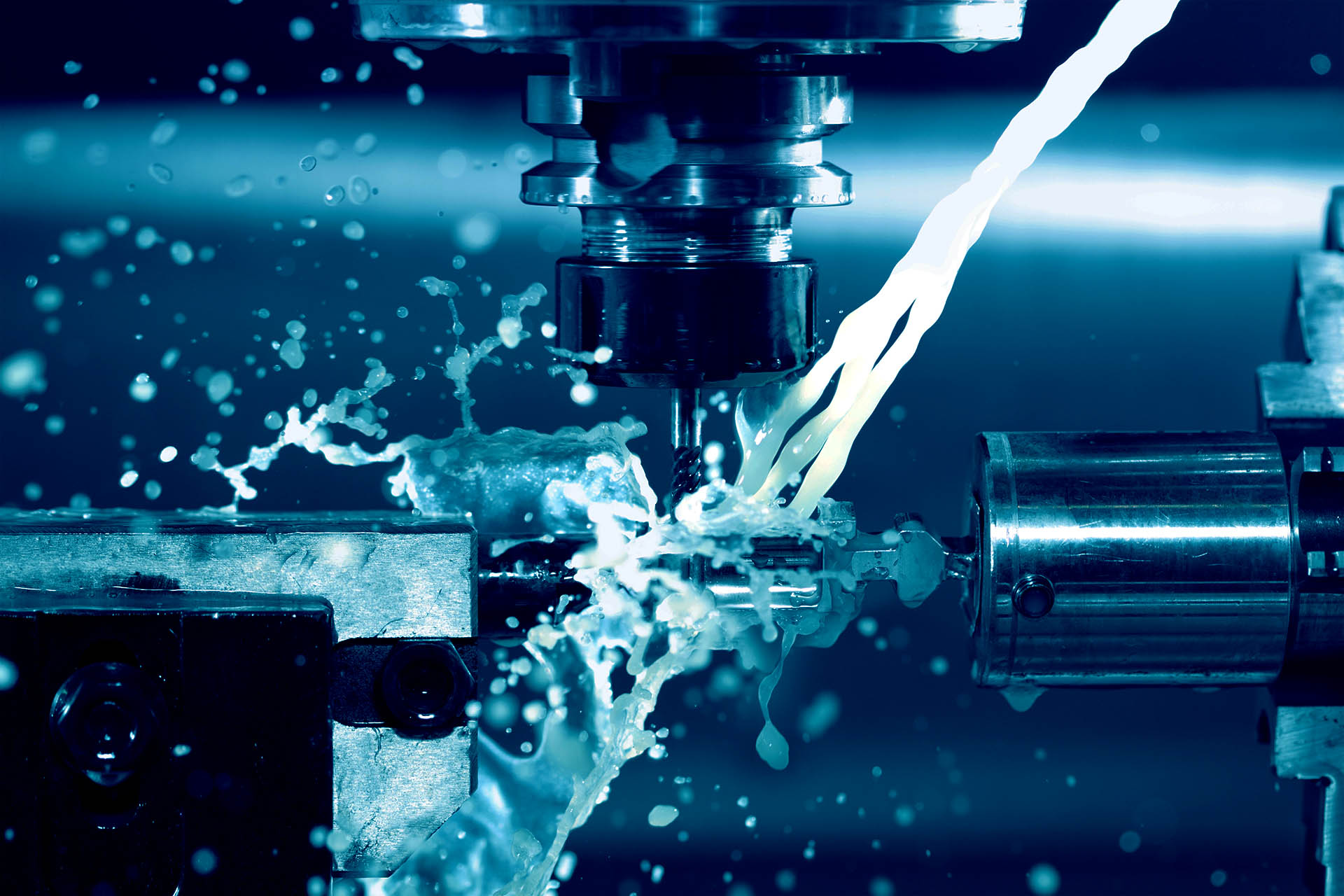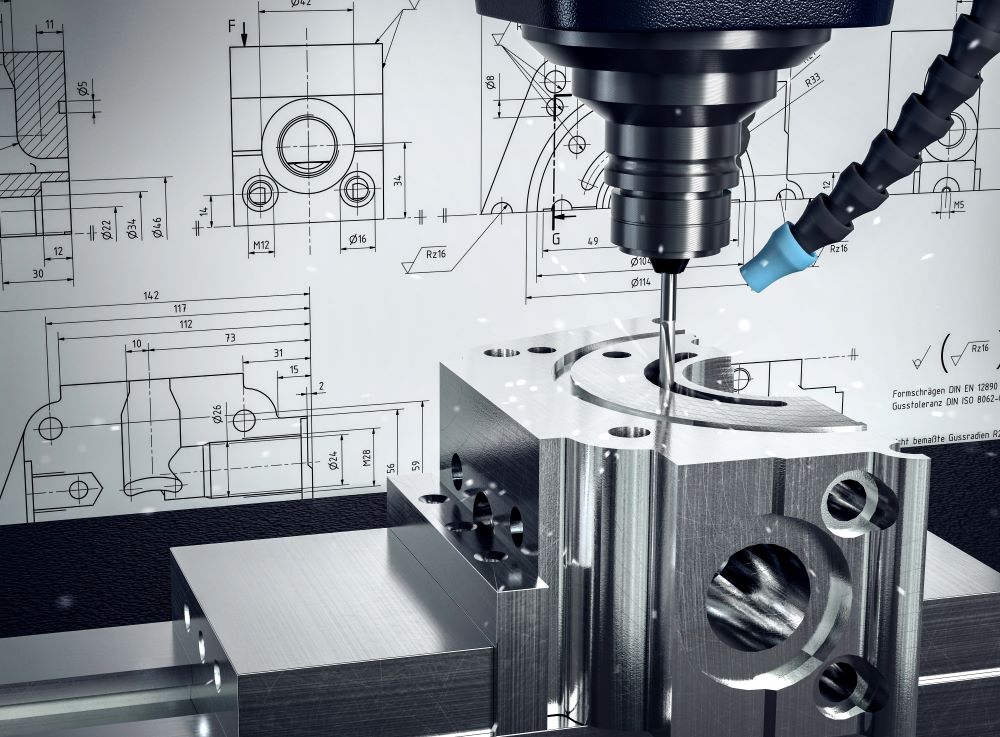Advanced Fasteners and Machining Techniques for Personalized Manufacturing
Advanced Fasteners and Machining Techniques for Personalized Manufacturing
Blog Article
Revealing the Intricacies of Bolts and Machining Processes for Optimum Efficiency
In the realm of design and manufacturing, the option of bolts and the intricacies of machining procedures play an essential duty in figuring out the best efficiency and toughness of a product. From the seemingly simple job of choosing the appropriate kind of fastener to the facility accuracy machining techniques used, every action in this procedure demands thorough interest to information. As we embark on this expedition into the world of bolts and machining, we will discover the refined yet crucial variables that can substantially influence the effectiveness and top quality of the end product, losing light on the frequently forgotten aspects that can make all the difference in attaining ideal efficiency.

Importance of Proper Bolt Choice
Choosing the ideal bolts is vital in making sure the architectural stability and durability of any type of mechanical assembly. Fasteners play a basic function in holding components with each other safely, with the best choice adding substantially to the overall efficiency and reliability of the setting up. When selecting bolts, aspects such as material compatibility, ecological conditions, load-bearing ability, and simplicity of installation have to be very carefully considered to guarantee optimum performance.
Inappropriate fastener option can result in an array of problems, consisting of loosening, deterioration, and even architectural failure. Making use of fasteners that are not matched to the specific requirements of the setting up can compromise its capability and pose safety and security risks. For that reason, developers and engineers have to thoroughly evaluate the application needs and pick fasteners that satisfy or surpass the required requirements and specs.
Additionally, the proper bolt selection procedure entails evaluating the joint style, expected lots, resonance degrees, and potential thermal expansion or contraction to make sure that the picked bolts can hold up against the operating problems properly. By prioritizing correct fastener choice, producers can enhance the quality, longevity, and efficiency of their mechanical settings up.
Types and Qualities of Bolts
A vital element of mechanical settings up exists in comprehending the diverse types and distinct features of bolts made use of in numerous commercial applications. Bolts are vital parts that hold frameworks together, making certain security and performance. There is a variety of fasteners readily available, each made for details functions based on the application requirements. Common sorts of bolts include screws, bolts, nuts, washers, rivets, and pins.
Screws are threaded fasteners that are commonly utilized to sign up with two or even more parts with each other. Nuts are inside threaded bolts that mate with bolts to hold components with each other. Washing machines are thin plates that distribute the load of a bolt, avoiding damages to the material being secured.
Understanding the qualities of each kind of bolt is essential for picking the ideal one for a certain application, making certain optimal performance and integrity of the mechanical setting up. Fasteners and Machining.
Precision Machining Methods for Effectiveness
The complex style requirements of various reference bolts require utilizing precision machining strategies for optimum effectiveness in producing processes. Accuracy machining is critical in making certain that bolts meet the specific specs required for their intended application. Among the key methods utilized in precision machining is Computer Numerical Control (CNC) machining, which enables high degrees of accuracy and repeatability in the production of fasteners. CNC equipments are capable of executing complex cuts and forming operations with very little human intervention, resulting in raised efficiency and uniformity in the production process.
By using accuracy machining techniques, manufacturers can boost the quality of fasteners, reduce material waste, and enhance general manufacturing efficiency. The use of sophisticated machining processes helps ensure that bolts satisfy industry standards and client assumptions for efficiency and dependability.

Variables Influencing Machining Process Efficiency
Different variables play a considerable duty in determining the performance of machining processes in the manufacturing of bolts. The initial important factor is the selection of cutting devices. Choosing the ideal tools based on the material being machined, desired surface, and cutting rates can significantly impact the effectiveness and high quality of the machining procedure. Additionally, the reducing parameters such as cutting speed, feed rate, and depth of cut are essential variables that affect performance. Fasteners and Machining. Optimizing these specifications based on the particular requirements of the bolt being created is crucial to achieving accurate and cost-effective machining.
Machine strength and stability likewise play a crucial role in establishing machining process performance. An experienced driver can make real-time changes, troubleshoot issues efficiently, and make certain that the machining procedure runs efficiently, eventually impacting the last top quality of the bolt.

Quality Assurance Steps in Manufacturing
Factors influencing machining procedure efficiency, such as cutting device selection and machine security, straight impact the implementation of top quality site control steps in production. Quality control measures are important in guaranteeing that products meet the called for requirements and specs. In the manufacturing procedure, different methods are utilized to maintain high quality requirements. Examination and testing play an important function in determining any variances from the wanted result. Normal maintenance of machining devices is also crucial to maintain top quality control. Calibration of equipments and tools is required to make certain precise and accurate production procedures. Furthermore, carrying out standardized operating procedures and methods can assist in keeping uniformity and high quality throughout the assembly line. Quality assurance gauges not just concentrate on the end item however likewise on every phase of the production process to prevent flaws and errors. By adhering to strict high quality control steps, manufacturers can enhance client fulfillment, build a credibility for reliability, and eventually attain optimal efficiency in their machining procedures.
Conclusion
Finally, picking the right fasteners and making use of precision machining techniques are necessary for optimum efficiency in producing procedures. Comprehending the kinds and features of fasteners, in addition to factors affecting machining process efficiency, can lead to improved performance and quality assurance measures. By focusing on these ins and outs, suppliers can attain greater levels of performance and integrity in their products.
In the realm of design and manufacturing, the choice of fasteners and the complexities of machining procedures play a crucial duty in figuring out the utmost efficiency and durability of an item (Fasteners and Machining). One of the primary methods utilized in precision machining is Computer system Numerical Control (CNC) machining, which enables high degrees of precision and repeatability in the manufacturing of bolts. The usage of innovative machining processes aids ensure straight from the source that bolts meet market criteria and customer assumptions for efficiency and dependability
In conclusion, selecting the appropriate fasteners and making use of accuracy machining techniques are necessary for ideal performance in producing procedures. Comprehending the types and attributes of fasteners, along with factors influencing machining procedure efficiency, can lead to boosted efficiency and high quality control procedures.
Report this page